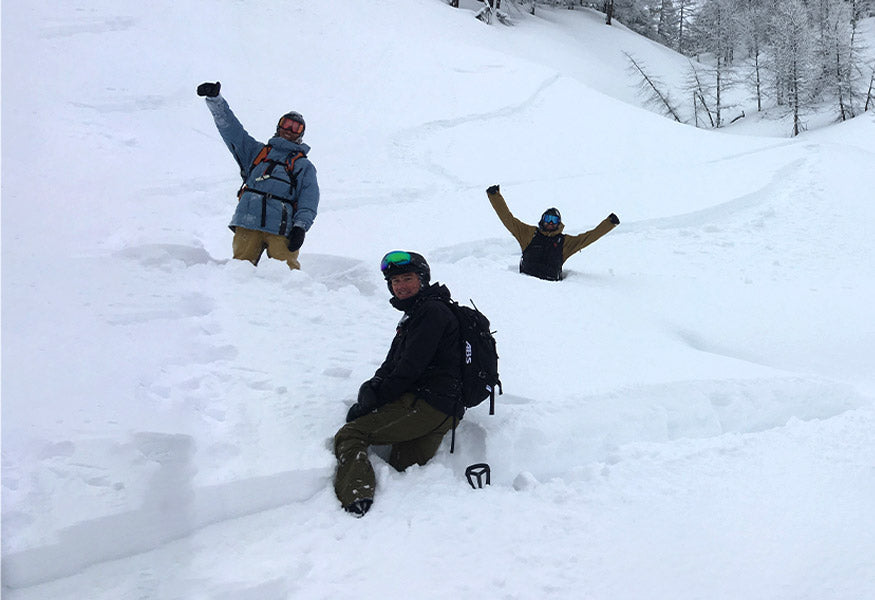Design—Holistic Shaping
Engineered Craftwork — Holistic Shaping
Board shaping isn’t just drawing a shape on a piece of paper. It starts with years of riding in all snow conditions throughout the varied mountain ranges of the world. To convert and interpret this experience into product, mechanical engineering and hydrodynamics provide the science to create shapes that perform in specific ways to elevate the pleasures of snowboarding. Then the eye of a woodworker brings in the aesthetic element that creates beauty in functional tools.
At Cabin, shaping is a holistic, integrated process. Paul balances, adjusts and revises six key aspects of shaping to work with the material science in order to craft snowboards that make turns feel more rhythmic, powder slashes feel more energized and sidehits feel more poppy.

The Details of Cabin’s Holistic Shaping
Camberline


PowerLoad Sidecut:
We’ve created a progressive sidecut ideal for turning performance and for improving response from tapered tails. We combine two different radii with a tighter arc in the rear third of the board so that pressure builds through the turn and it finishes with power.

Nose & Tail Geometry
To control for initiation, float and turn finish, we adjust elements like nose length, nose transition zone and tail transition zone.


Surface Area / Rider Position
When designing boards we focus as much on surface area as we do length. Similar to volume/water displacement in surfboard design, surface area is a primary driver of how a board will rise up in the snow, stay in the upper layers, and let the rider float surfy turns. With some added width up front combined with a wider waist, we create pow-ripping boards that don’t need or want to be super long. Then to optimize float and turnability, we position the rider in precisely the right spot on both the surface area and the sidecut.
Northern Light
Surface Area: 4015 cm² on the 148 and 4409 cm2 on the 158Rider Position: 3.2% back.

Peregrine
Surface Area: 3921 cm² on the 150 and 4255 cm² on the 158Rider Position: 20-back stance for stock days and a 40-back stance for the deep ones

Flex
For each of our models, we rate the overall flex on a scale of 1-to-10. Then we give a similar rating for the forebody and the tail section of the board to give you a better sense of flex and feel.
Peregrine

Northern Light


